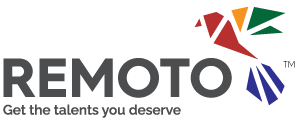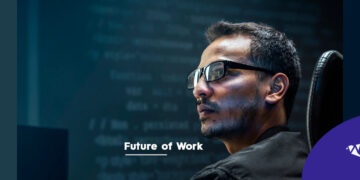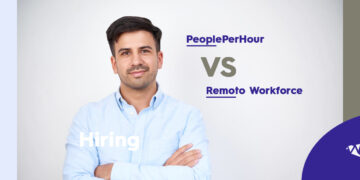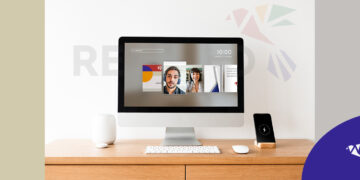Today, diverse generations are joining forces within the same company. From experienced Boomers to tech-savvy Gen Z, this generational workforce brings both challenges and opportunities for innovation. The blend of perspectives and experiences fosters a dynamic work environment that encourages idea exchange, leveraging collective wisdom to drive success.
In this blog post, we’ll explore leading a multigenerational workforce and share tips on fostering inclusivity for a harmonious and productive work environment.
Understanding the Multigenerational Workforce
Before we explore how to foster inclusivity and diversity, it’s essential to understand the composition of a multigenerational workforce.
This diverse mix typically includes Baby Boomers (born 1946-1964), Generation X (born 1965-1980), Millennials (born 1981-1996), and Generation Z (born 1997-2012). Each generation has its distinct characteristics, values, and communication styles shaped by the historical events and technological advancements of their time.
For instance, Baby Boomers often value loyalty, experience, and face-to-face communication. Generation X may prioritize work-life balance and independence, while Millennials are known for their tech-savviness, collaborative nature, and desire for purpose-driven work.
Generation Z, the youngest in the workforce, brings a fresh perspective with a strong affinity for digital tools and social consciousness.
Check out this TED talk if you’re interested in learning more about generations in the workplace!
The Benefits of a Multigenerational Workforce
Leading a multigenerational workforce can be daunting, but it also comes with numerous advantages. Each generation’s unique strengths and perspectives contribute to a dynamic and innovative workplace. Here are some key benefits:
- Diverse Skill Sets: Different generations bring a wide range of skills and expertise to the table. Baby Boomers may have extensive industry knowledge, while Millennials and Gen Z excel in digital technology.
- Innovation: Collaborative problem-solving that integrates various viewpoints leads to creative solutions and fresh ideas.
- Mentorship Opportunities: Older employees can mentor younger ones, passing on their knowledge and wisdom, while younger employees can provide insights into the latest trends and technologies.
- Enhanced Customer Engagement: A diverse team can connect with a broader range of customers and clients, leading to improved customer satisfaction and loyalty.
- Improved Employee Satisfaction: A workplace that values generational diversity tends to have higher job satisfaction, which can lead to increased retention rates.
Challenges of Leading a Multigenerational Workforce
While the benefits of a multigenerational workforce are significant, it’s essential to acknowledge and address the challenges that may arise. One of the most common challenges is the potential for generational conflicts. These conflicts may stem from differences in work styles, communication preferences, and values.
For instance, a Baby Boomer manager may struggle to understand the work habits of a Generation Z employee who prefers remote work and relies heavily on digital communication. Likewise, a Generation X team member may find it challenging to relate to a Millennial coworker who values constant feedback and recognition.
These conflicts, if left unaddressed, can lead to decreased productivity, morale, and team cohesion. Therefore, it’s crucial for leaders to proactively manage these challenges to create a harmonious multigenerational work environment.
Tips for Fostering Inclusivity in a Multigenerational Workforce
Let’s explore these tips for fostering inclusivity and diversity across generations:
- Open and Transparent Communication: Effective feedback and communication is the cornerstone of inclusivity. Encourage open dialogue and active listening among team members. Create a culture where everyone’s opinions and ideas are valued, regardless of their age.
- Flexible Work Arrangements: Recognize that different generations have diverse preferences for work arrangements. Offer flexibility in terms of remote work, flexible hours, or part-time options to accommodate these preferences.
- Training and Development Programs: Implement training and learning programs that cater to various learning styles and preferences. For instance, provide online courses for tech-savvy Millennials and interactive workshops for hands-on learners.
- Mentorship and Reverse Mentorship: Facilitate mentorship programs where younger employees can learn from the experience of older colleagues, and vice versa. This cross-generational knowledge exchange fosters mutual respect and understanding.
- Inclusive Decision-Making: Involve employees from different generations in decision-making processes. This not only ensures a variety of perspectives but also reinforces a sense of ownership and commitment to the organization’s goals.
- Recognition and Rewards: Customize your approach to recognizing and rewarding employees. While some may appreciate public recognition, others may prefer private acknowledgment. Tailor your methods to suit individual preferences.
- Conflict Resolution Procedures: Establish clear conflict resolution procedures that address generational conflicts promptly and fairly. Encourage employees to use these procedures when necessary to maintain a harmonious workplace.
- Generational Sensitivity Training: Offer workshops or training sessions to help employees understand generational differences, dispel stereotypes, and foster empathy among team members.
Embracing Inclusivity for a Thriving Multigenerational Workforce
Inclusivity in a multigenerational workforce is not a one-time effort but an ongoing commitment.
It requires adaptability, patience, and a genuine desire to create a workplace where every employee feels valued and empowered. By understanding the unique strengths and challenges of each generation and implementing strategies for inclusivity, you can harness the full potential of a diverse workforce.
Leading a multigenerational workforce is a remarkable opportunity to tap into a broad spectrum of talents, experiences, and perspectives. By recognizing the benefits, addressing the challenges, and implementing inclusive practices, you can foster a dynamic, innovative, and harmonious workplace where all generations thrive together.
Inclusivity is not just a buzzword but a powerful strategy for achieving business success in the modern world. Embrace the diversity of your multigenerational workforce and watch your organization flourish like never before.














